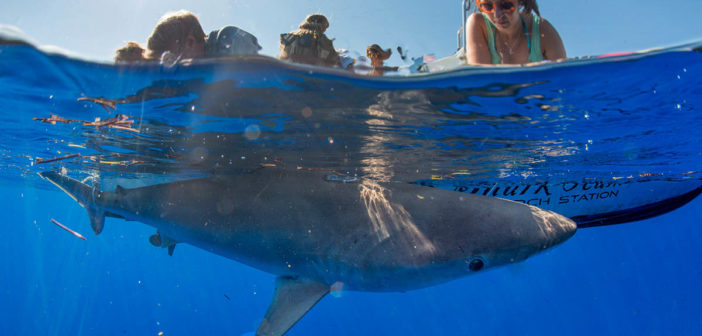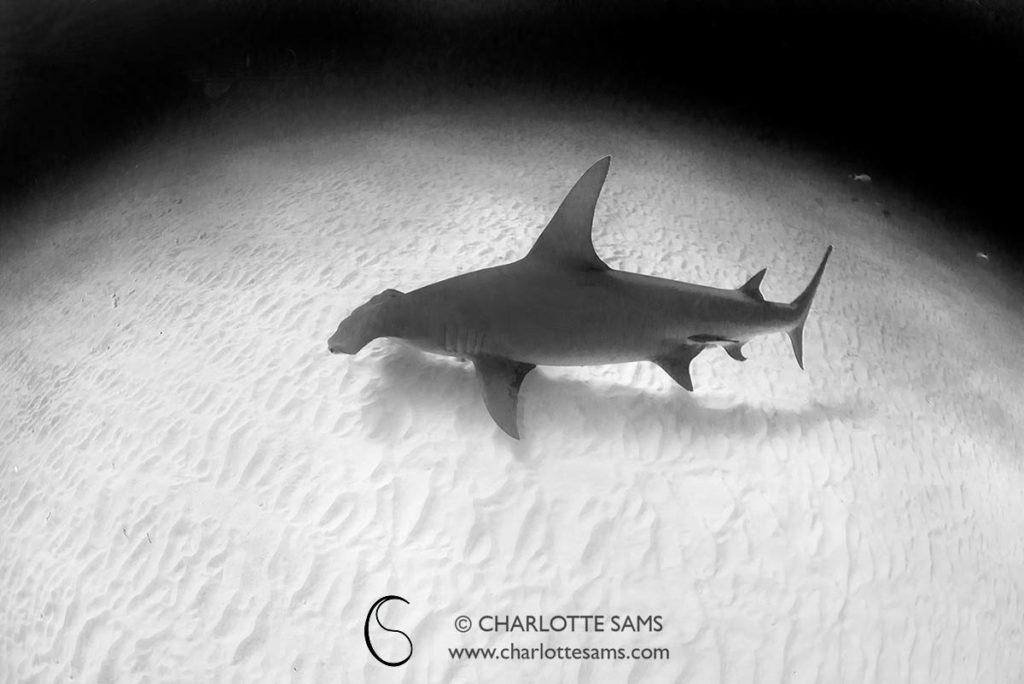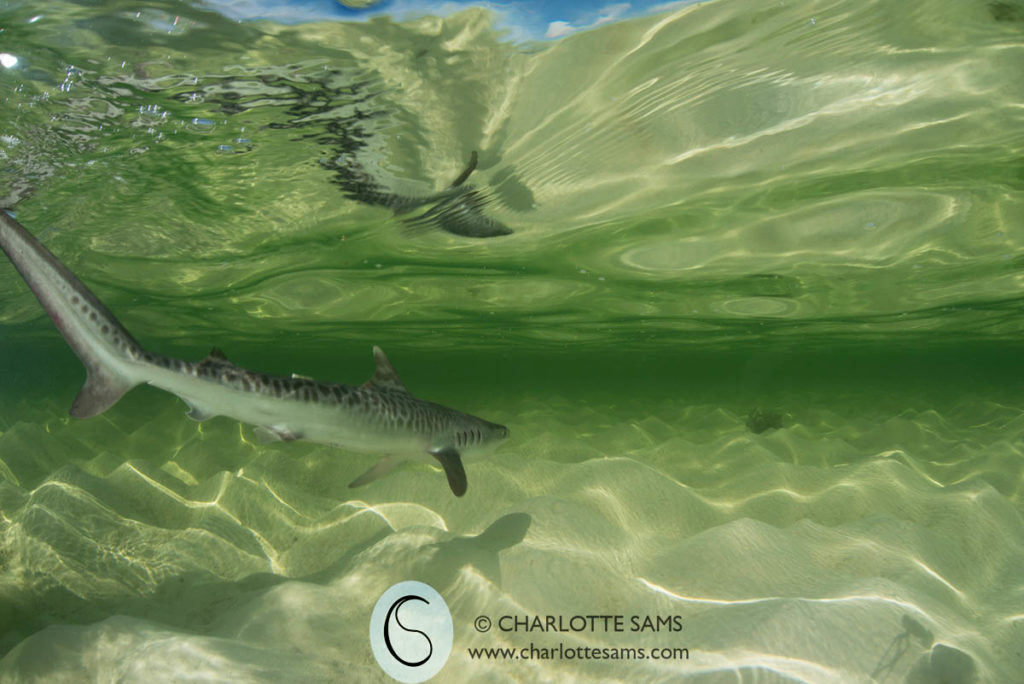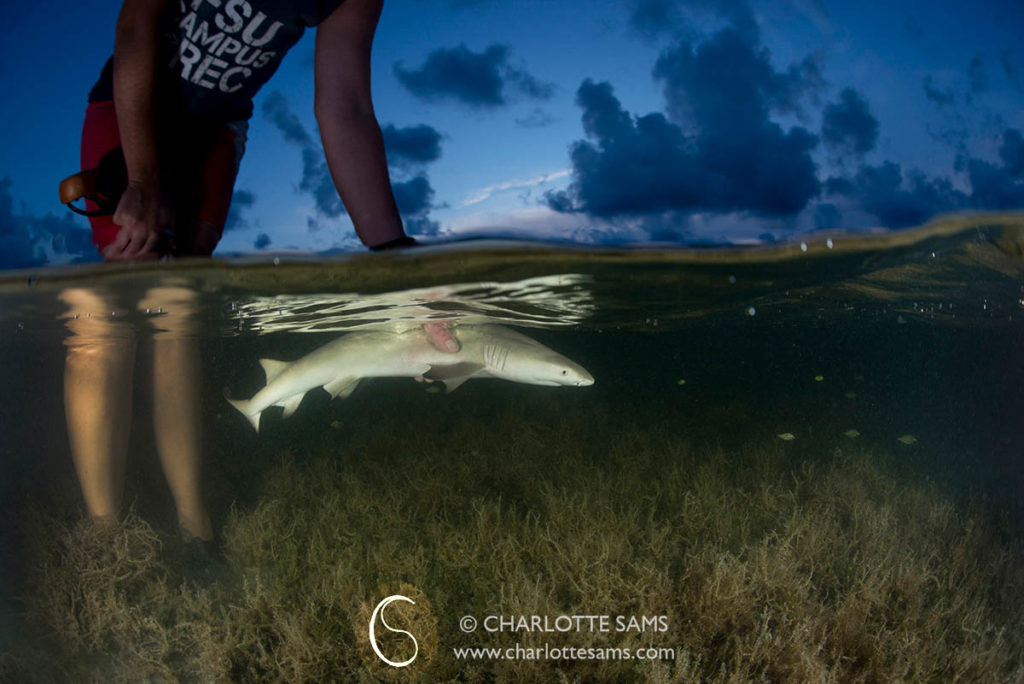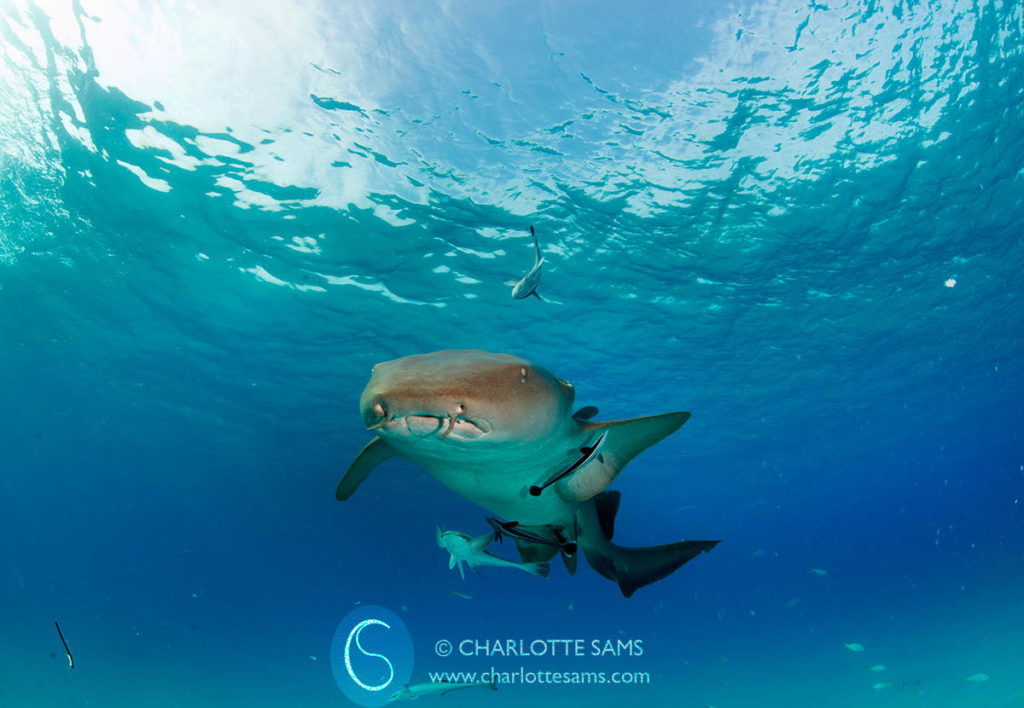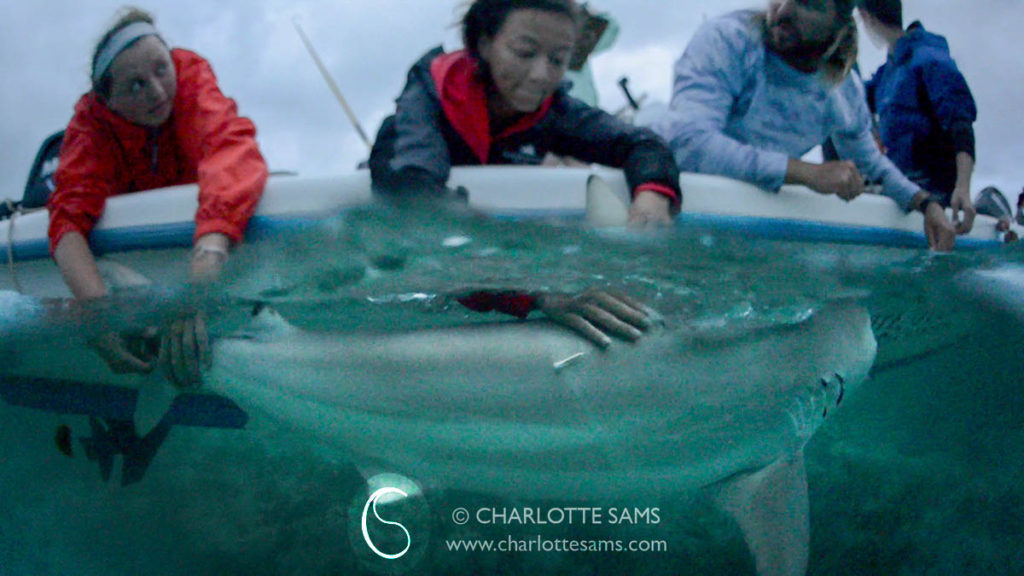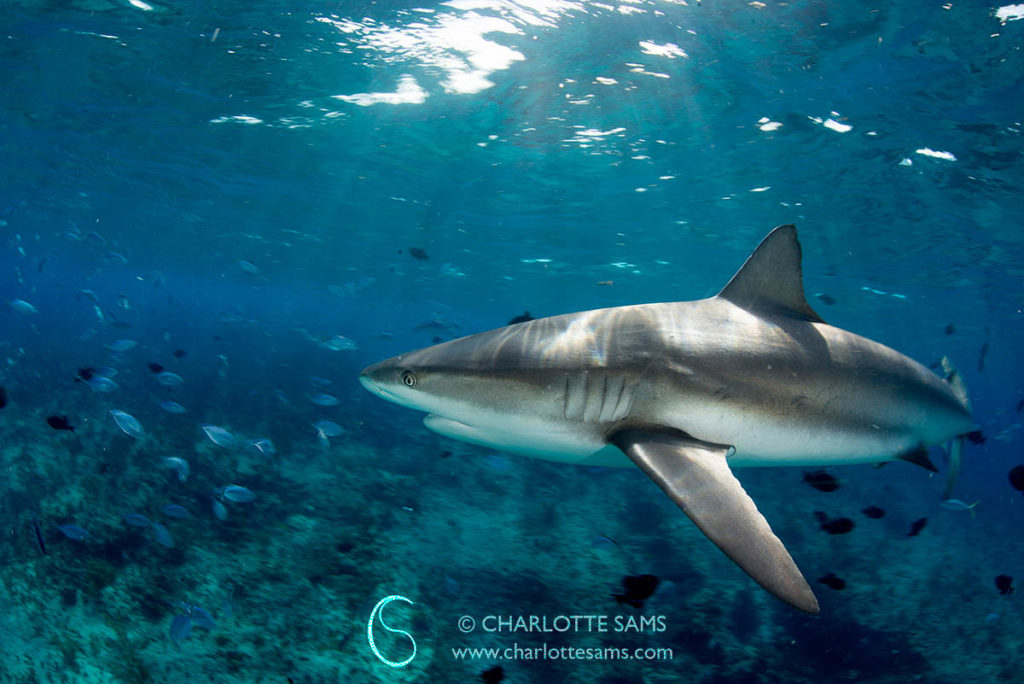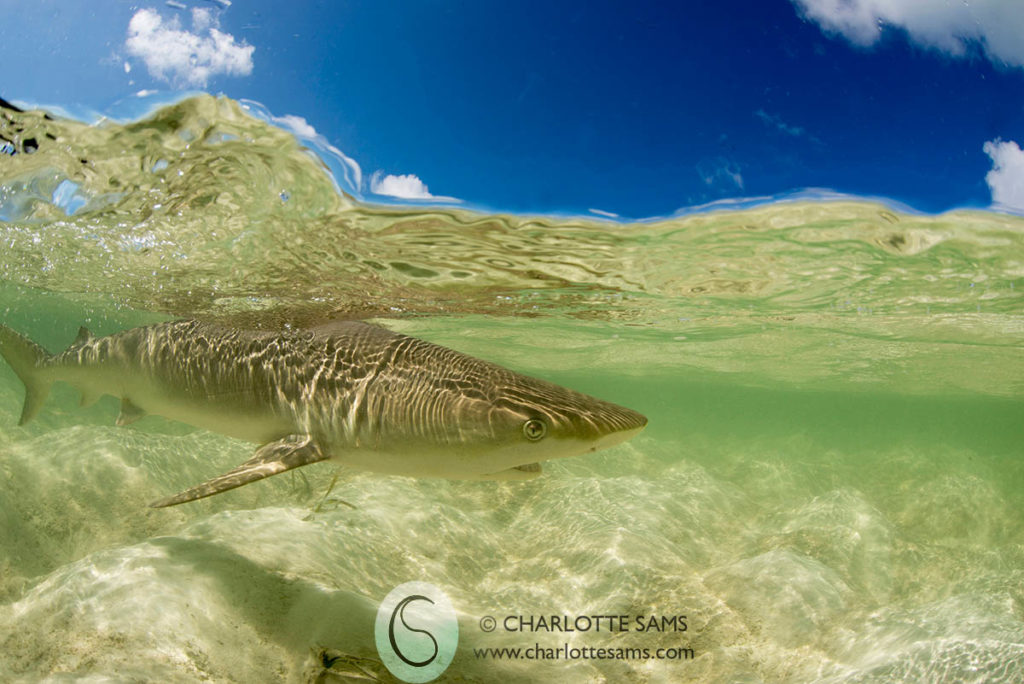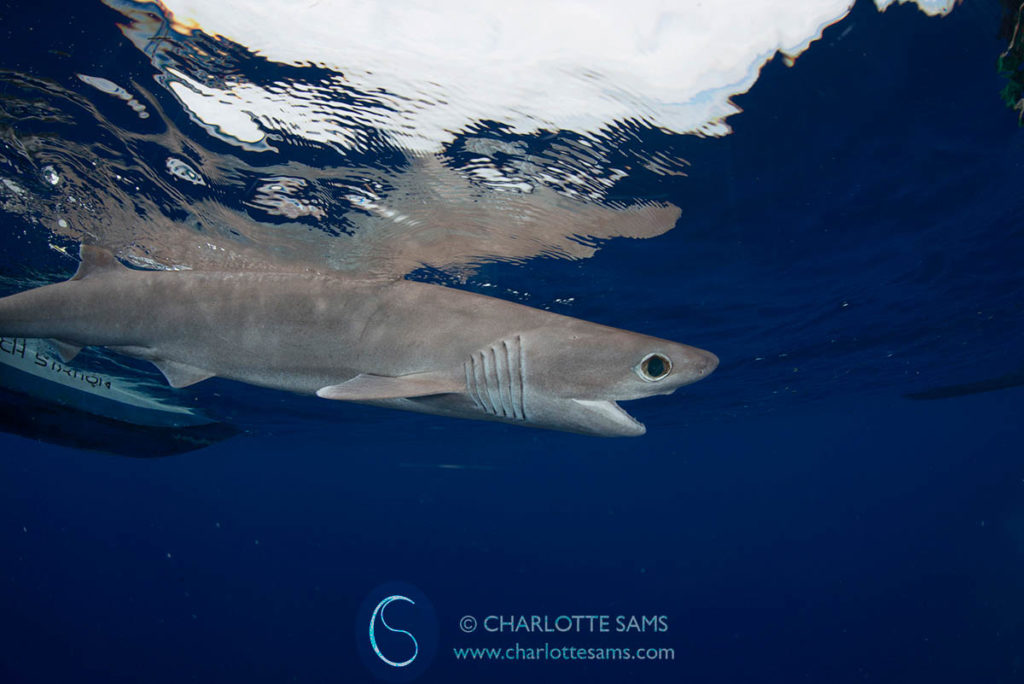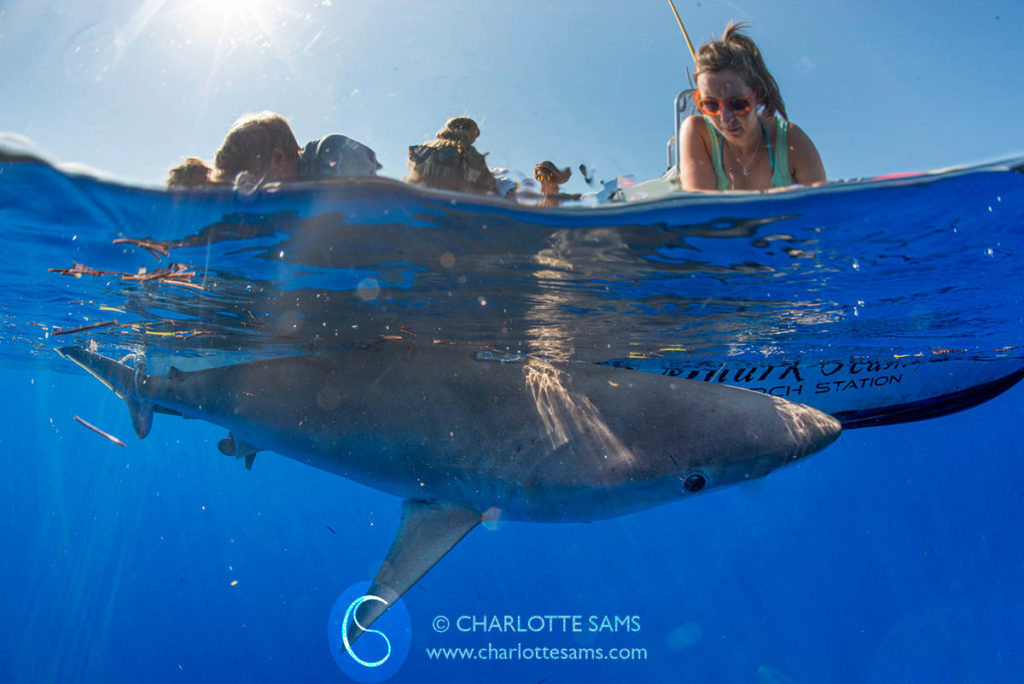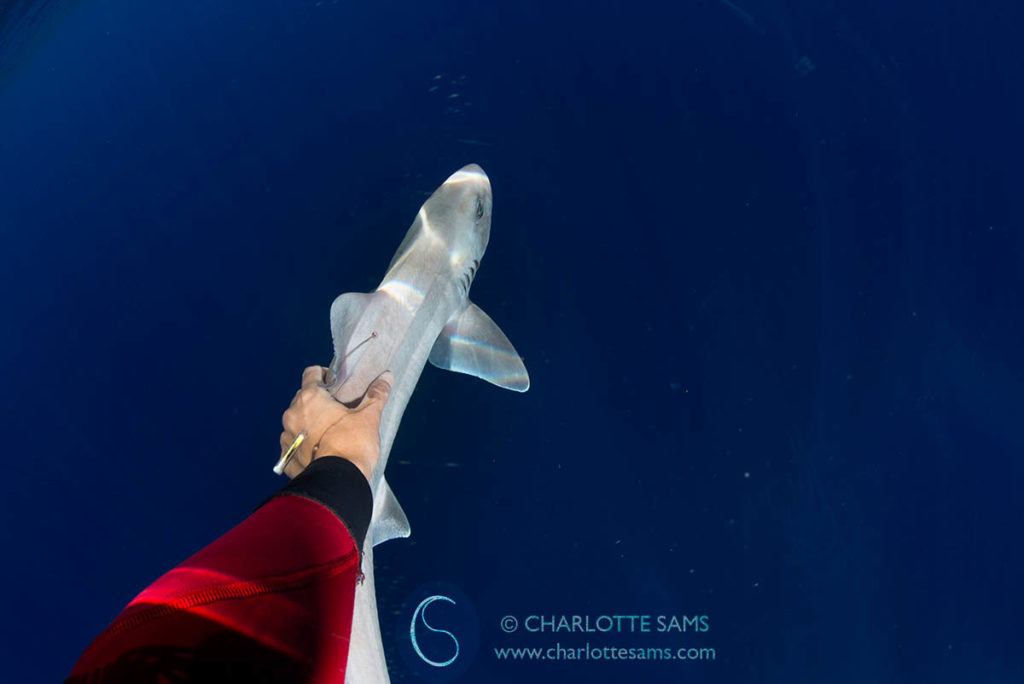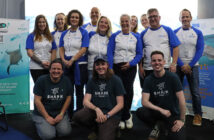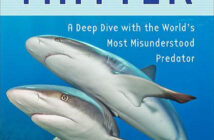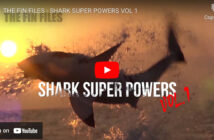1- Great Hammerhead (Sphyrna mokorran)
The Great Hammerhead is aptly named, one of the larger species and quite simply an incredible animal to share the water with. Bimini is in fact the worldwide diving hotspot to share the water with these sharks over the winter months (January- March), and scuba boats and liveaboards dot the waters of the western edge of the islands for these months, whilst the Great Hammerheads spend time here before heading north when the ocean warms. The Great Hammerhead is still listed as endangered by IUCN, protected here in the Bahamas shark sanctuary, but at threat from fishing pressures elsewhere, and as a large transient species, potentially in danger after the winter months. There is little known about these sharks, and why they come to Bimini in the first place, so the Sharklab team is trying to gain as much data on these sharks as possible, using Photo-ID, tagging, and tracking techniques.
2- Tiger Shark (Galeocerdo cuvier)
Another impressive species, and very common around Bimini’s waters, but less frequently seen by the average tourist. The shallows around Bimini are popular with Tiger sharks of all ages; newborns to big adults over 3m in length and even 2m in girth! Very occasionally spotted by scuba divers, and more often by local fishermen, these sharks are found in Bimini waters from 2m deep down to 300m. Interestingly, the Tiger sharks found around Bimini and the Bahamas are by average noticeably smaller than relatives found in Australia and other regions. Aside from standard tagging and data collection, the Bimini Sharklab also has specific PhD project running to understand why these sharks use the area.
3- Lemon Shark (Negaprion brevirostris)
Lemon sharks are absolute key to the Sharklab’s research, particularly so as they were the first species Dr. Gruber came to the island to study. They are commonly sighted shark around Bimini, but mainly the juveniles. This is because for a few years they live in the safety of the mangroves that fringe the eastern edge of Bimini, and so can be spotted in shallow mangrove channels quite often. The adult female lemon sharks also return to Bimini, displaying natal philopatry (returning to their place of birth to also later give birth to their own pups). Recent research has re-determined the lemon shark longevity as 37 years old (previously estimated at 20), without the Sharklab’s longitudinal PIT project running over 20 years now, scientists would not have collected data making this discovery possible.
4- Nurse shark (Ginglimostoma cirratum)
Nurse sharks are common around the Bahamas and the Caribbean waters, found in almost any waters from marinas, to mangroves, to scuba diving sites. They are a very friendly species, nonplussed by humans and scavengers if any scraps of fish are lingering around. When these sharks are babies, they have large spots and stripes on their bodies, which then fade as they grow. Their skin is some of the toughest of all the sharks, with very large dermal denticles (small scales that form shark & ray skin). As a tough and common species, they are also a great study species, and various projects have used nurse sharks as a model species.
5- Blacktip (Carcharhinus limbatus)
The Blacktip shark is a skittish and fairly small species, sighted often by boat but less so when you’re in the water too. All shark species are tagged at available opportunities by the Sharklab team, and Blacktips are included within this category. Ultimate goals of this are to understand the movement patterns of numerous elasmobranchs (sharks & rays) around Bimini. As a skittish species they can also be susceptible to stress, so tagging with these sharks must be precise, efficient, and fast, with the safety of the shark always at the utmost priority.
6- Caribbean Reef shark (Carcharhinus perezi)
Simialrly to the nurse shark, Caribbean reef sharks are almost a guaranteed sighting during a trip to Bimini or other Caribbean locations. These are a decent sized species, measuring around* 2m in length, and at many dive spots they are completely unaffected by divers, seemingly unbothered if they brush past your side. Sadly these sharks can also be at threat from fishing, not necessarily targeted fishing but also entanglement in gear, due to their habitat of reef areas full of fish,
7- Blacknose shark (carcharhinus acronotus)
Blacknose sharks are similar in physiology and habitat to the Reef shark, but a much smaller species. You may spot a blacknose shark in the same areas as a Reef shark, but they are less frequently sighted, as they tend to be less familiar and comfortable around divers or snorkelers. The Sharklab tags these species in the same way as the Reef sharks, to try and gain better understanding of movement patterns around the islands.
8- Bluntnose Sixgill (Hexanchus nakamuri)
Moving onto the rare and unusual deep-water species, these sharks are known to frequent the waters of Bimini, but only really seen by the shark scientists and researchers as opposed to the general public. The bluntnose sixgill is extremely uncommon, unusual, and exceptionally little is known about it. Therefore, any data that can be gained on these species is extremely useful to deep-water shark specialists. Scientists take measurements, isotope & DNA samples, and then tag individuals in the case of recapture, before releasing back into the depths of the Gulf Stream.
9- Night shark (Carcharhinus)
The night shark is another deep-water species found only when dropping lines into the 200-300m depths of the Gulf Stream that edge the western side of Bimini. A medium sized species in the same family (the requiem sharks), as many others found in these waters, so it is somewhat similar in physical attributes. Again, little is known about these sharks, so all data that can be collected can support future papers, projects, and ultimately conservation efforts to protect these animals.
10- Dusky Smoothhound (Mustelus canis)
A smaller and slender deepwater shark, the dusky smoothhound has many similar looking relatives found in oceans worldwide. Divided into two subspecies, Mustelus canis canis and Mustelus canis insularis, these sharks are more common than the Sixgill or the Night sharks, but still data gained from sample analysis or recapture movements is vital to understand the population. To spot these sharks is a special experience, and you would typically only encounter them through targeted deep-water fishing.




